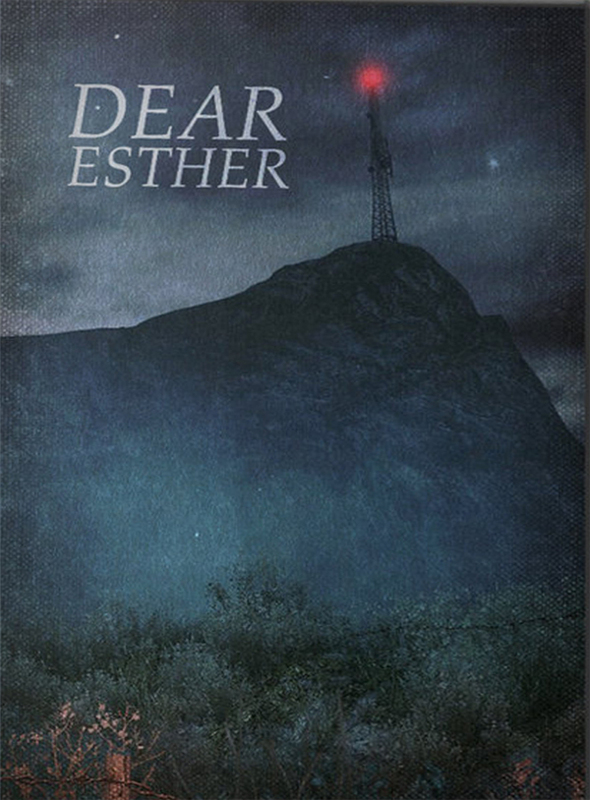

They are ambiguous and non-linear in two ways. They mostly contain letters to a certain "Esther" and commented excerpts from an old book about the Hebrides islands, on which the game is set.

Textual narrativeĪll we know about the setting and its characters is conveyed by disembodied voice overs, played at specific locations along the way. Time has told us that this surrealist element, this deliberate undermining of the logic and familiarity we gradually build inside the game world is probably one of the main strength of the "walking simulator" sub-genre, and the area where it arguably gets more poetic and inspiring. Through constant manipulation and self deconstruction, it constantly pushes you back to the state of curiosity and anxiety you had in that Zelda screen, and makes you yearn for explanations. Each fight, boomerang and bottled fairy was a step towards dominating this world until nothing could scare you anymore.ĭear Esther never allows you to do that. In some way, the Legend of Zelda was about solving that tension. The feeling of uncertainty was quite uncomfortable (especially for a young kid). It was the very first thing you saw in the Legend of Zelda, and you substantially had no clue about who you were and what was going on.Īll you knew was that you had a scary looking entrance in front of you, and maybe monsters round the corner. If you had a NES in the 80's, you probably remember this scene: Where am I? Who am I? " Where I am? Who is my avatar? What is actually real?" These, and even more irrational elements, destabilize the narrative, taking our certainties away with it. Why the hut of a shepherd has an ultrasound picture on the table? Who really made those huge paintings? Who lit the candles along the way? Initially, everything seems to fit the “desert island” narration, but a mysterious music and sound effects already hint that more is to come.Īs you move forward, things get increasingly incongruous. In eerie solitude, you move towards the only sign of life you can see: a blinking aerial in the distance. You start your travel as a lone man on a desert island. In order to draw you in, Dear Esther uses mystery and unease. The correct path shows new locales and triggers bits of narration, while the wrong ones bring you back to old locations (back tracking) or, if you fall from a cliff or into the sea, "kill" you with a black screen - after which you reappear in the last safe position before the fall. As you cannot grab objects around you, nor jump or climb, your only aim is to find the “good” path forward, like in a labyrinth of sorts. GameplayĪs we can expect from above, the “game” element of Dear Esther is truly minimalist, almost vanishing into the conventions of 3D gaming.Īs a player, you can walk around the 3D landscape using the WASD keys and look around with the mouse. How these goals have been achieved? And how they impact translation? Let's see it together.

It's all very dark, but it's unmistakably a human figure.Īs the path twists down before climbing up to the cliff, you start to picture what you might do, see, or say. There, next to a lit candle, you see a shape against the fog. You have walked in complete solitude for about two hours when the path opens to shows a small cliff in the distance. Near the end of Dear Esther, there is a moment that sums up the whole experience. On top of proving a useful template for the whole "walking simulator" niche, it offers a fascinating perspective on how story merges with gameplay and -thanks to a very unusual Italian translation- on how we can translate it. Dear Esther, the first-person narrative game published in 2012 by The Chinese Room, has been a surprisingly seminal title with numerous indie titles following its steps to explore the narrative possibilities of the very framework we usually associate with shooters.


 0 kommentar(er)
0 kommentar(er)
